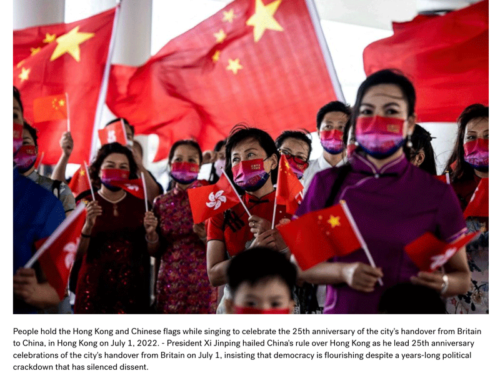January 16, 2020 | Journal of Contemporary China
David Zweig, Kang Siqin & Wang Huiyao
ABSTRACT: Reverse migration has mitigated the brain drain for many Asian countries. But can developing countries actually bring back their best overseas talent? How can this studymeasure the quality of that talent? And, if the best are not returning, why not? Is the ‘institutional culture’ within the scientific and academic institutions the cause? The authors address these questions by comparing full-time and part-time returnees in three national programs, using each scholar’s h-Index, the impact factor of the journals in which they publish, and the annual number of publications by each researcher. The findings show that, circa 2012–13, the strongest researchers returned only part-time. Second, returnees to the Chinese Academy of Sciences were weaker than returnees under national programs at universities. And third, universities whose presidents reformed the institutional culture at the school attracted better overseas talent than other universities. The findings, then, show that resistance to institutional change can undermine a state’s effort to promote its research and development while domestic reform can promote that endeavour.
INTRODUCTION:
All developing countries suffer an ongoing loss of educated talent, typically referred to as a brain drain, and while discussions of the ‘brain gain’ and ‘brain circulation’ reflect the positive perspective that a significant flow of human talent has been flowing back to some developing countries,1 we know little about the quality of the returnees as compared to those who remain abroad. States invest significant resources in programs to attract their own nationals living abroad to return in the hope that they will transfer the skills and knowledge that they have gained overseas,2 and national development is now often discussed in terms of the global competition for talent, a state’s human capabilities, or as a global ‘talent war.’3 Studies do suggest that, contrary to traditional wisdom, most developing countries experience a net gain from skilled emigration.4 But many people worry that the money is not well spent,5 and that despite the creation of a serious reverse flow, the best may not be returning.6
So, are the very best overseas nationals returning to their home country, or do the most talented sojourners from developing countries stay abroad? From a methodological perspective, how can we measure the relative quality of those who return home on a full-time basis versus those who return only part-time or not at all? Countries, such as China, have introduced numerous programs to encourage part-time reverse migration, assuming that some part time connections are better than no connections. But there are serious doubts about the quality of those people’s contributions.7
This article seeks answers to several questions. First, can developing countries, by investing time and money, actually bring back their best overseas talent? Second, what indicators can measure the quality of that talent? Third, if the best are not returning, why not? Does the ‘culture’ within the scientific and academic institutions in developing societies undermine the reverse migration of top talent?8 Is there a ‘partial reform equilibrium’ at work,9 where social groups which benefited from initial reforms resist further changes that would transform the institutional culture from which they benefit?
The authors address these broader questions by analyzing China’s efforts to recruit its top overseas talent and replace the ‘brain drain’ with a ‘brain gain’. First, the authors compare the quality of returnees in three nationally funded programs and explore the differences between those who participate in these programs full-time—i.e., they give up their overseas posts entirely—and those who keep a foot overseas in some foreign institution and return only on a part-time basis. To compare these cohorts the authors use each scholar’s h-Index, as well as the average annual impact factor (AAIF) of the journals in which these individuals published, and recheck the robustness of the authors’ results by using the number of articles published by each researcher annually. Based on this analysis, the authors can say confidently that circa 2012–13, full-time returnees were simply not as strong researchers as those who chose to maintain overseas posts and work in China only part-time. Second, the authors show that returnees to China’s major research institute, the Chinese Academy of Sciences, under that institute’s program to promote reverse migration, were weaker in terms of the quality of their publications than returnees under national programs at universities. The authors assert that the major problem was the continuing resistance to reform within the Chinese Academy of Sciences. Finally, the authors compare the flow of China’s best overseas talent into its top universities and show that universities whose presidents were more amenable to reforming the institutional culture, and, in fact, introduced such reforms, introduced more overseas talent to work in their universities. The authors’ findings, therefore, show unambiguously that resistance to institutional change in developing societies, such as China, can undermine a state’s effort to enhance state power through the promotion of research and development.
David Zweig
Hong Kong University of Science and Technology
Kang Siqin
Hong Kong; Hong Kong University
Wang Huiyao
Hong Kong; Center for China’s Globalization, China
Click here to read the full article online
Click here to read the full article as a PDF






Leave A Comment